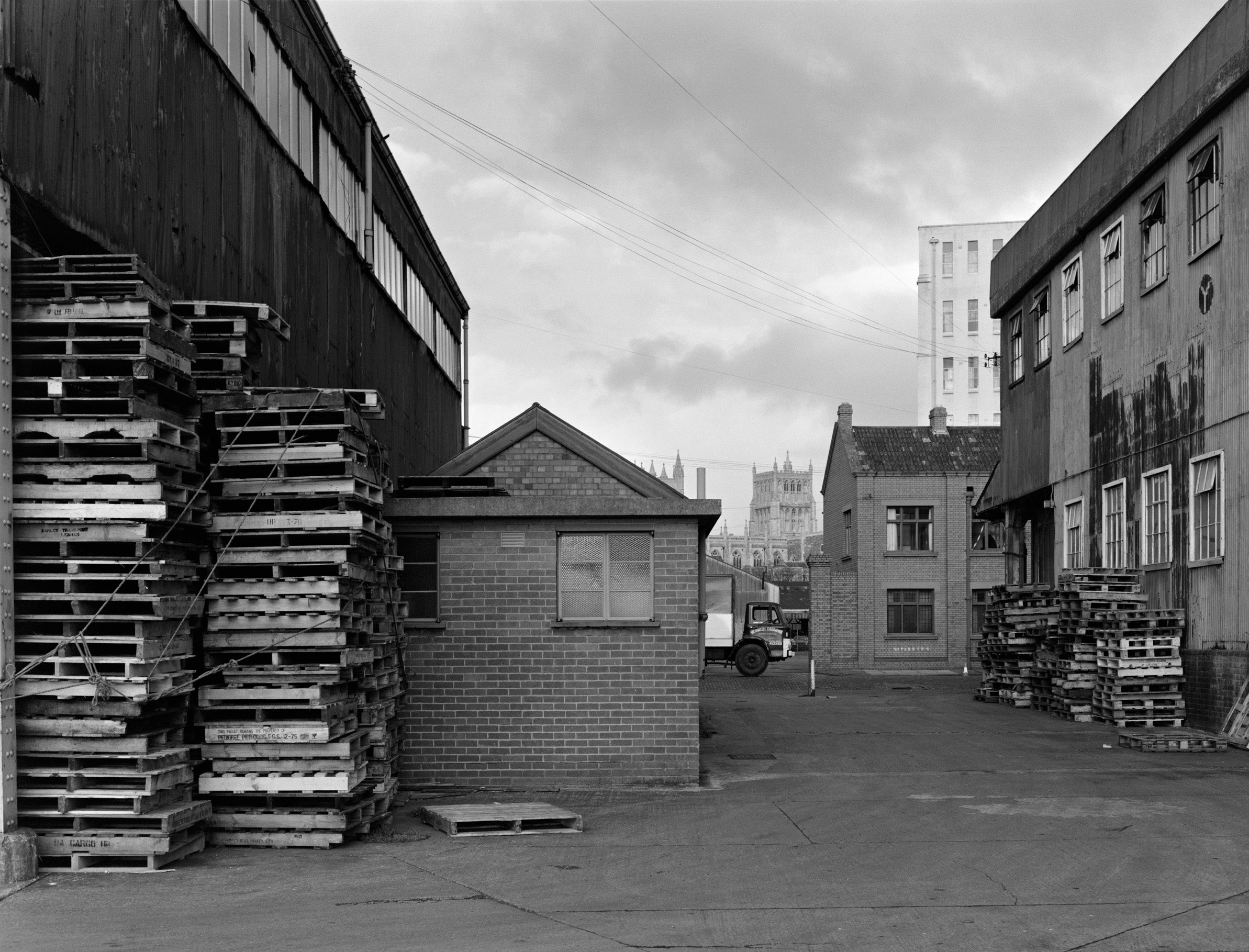
John Myers reviews The Harbour by Jem Southam
It has been three months since Jem Southam's latest book, The Harbour was released. Now with a set of fine art prints, new postcard collection and an upcoming exhibition in Bristol, we asked photographer John Myers to take a look at The Harbour and give us his thoughts.

Canon's Marsh Goods Station, 1978 © Jem Southam
Harbour. For a landlubber the word evokes the sound of cranes, seagulls, ships hooters, and the bustle of loading and unloading ships. Jem Southam however presents Bristol’s City Docks between daybreak and the onset of human activity. The docks are silent and even the pigeons, on the roof of Canons Marsh Goods Station, are still dozing. One or two photographs do contain figures, early risers I am sure, but they are used as staffage or to give a sense of scale.
It is the quality of the early morning light in these photographs that is remarkable. It emphasises a stillness, so as you move from image to image, the invitation is to look…and pause. Without the distraction of wind, rain or scudding cloud you get a genuine feel of a working harbour at the end of its life.

Hydraulic Engine House, Underfall Yard, 1982
Southam has the rare ability to photograph ‘big things’ as if they are small and presents the harbour, at times, as if it were a ‘toy town’ stage set. A brick hydraulic engine house is cleverly ‘boxed’ into a 5x 4 rectangle complete with a bystander and ‘Fox Talbot’ ladders, a crane with jutting arm graces Redcliffe Wharf like a rediscovered child’s toy on Antiques Roadshow.
But the docks, jetties and sheds of the harbour are far from pristine. Southam documents the harbour just after nature has begun to move in and before the developers set to work. Blossoming buddleia sprout from the rooftop of the WCA Mill offices and the branches of a large shrub at the top of a warehouse chimney points to the sky like radar antennae. Swastikas deface the windows of the Bristol Sand & Gravel offices, football supporters graffiti appears on signage and more buddleia sprout from roof lines.

Bathurst Parade, 1978 © Jem Southam
Jem Southam’s practice of working and re-working a subject creates a spatial coherence to the sequence of photographs - so you never get lost. The narrative however is never forced, it builds from image to image and you pick up the ‘story’ from the surface clues in the photographs themselves. The graceful sweep of the metal railings at the front of the house in Bathurst Parade, the breeze block that fill the doorway and windows and suffocate the lived interiors. Only the two metal dustbins, still chained to the railings give any clue as to a life lived. The side view of the same house a year later is blackened with smoke that has put paid to a shrub. The dustbins have gone. It all adds up to a poignant document of a world about to disappear.
There are references to other photographers of course. Southam’s nod to the new topography is evident in Canon’s Marsh, 1980 and the bonded warehousing that could have been imported from Gotham city. A reminder that the New Topographics was ‘something in the air’ in the 1970s that spawned a whole range of national variants.

Canon's Marsh, 1980 © Jem Southam
The photographs in The Harbour have the distinctive voice of a photographer waiting for the right light, the perfect crop and measured view point. Southam reminds us that large format photography (all these photographs were taken on a 5 x 4 MPP camera) is/was unparalleled at documenting the view.
Of all the photographs in this book SS Great Britain, 1978 shows the ship as a silhouette, the river high and detail obscured by the glare of the sun. Softer more lyrical than any other photograph in this collection it points to future work.

SS Great Britain, 1978 © Jem Southam
Guest blog post by John Myers
